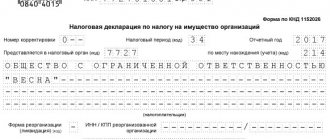The group of movable assets includes all valuables whose parameters differ from the characteristics of immovable objects. One of the specific features of this group is the physical ability to transfer assets to third parties. This means that this group includes all objects that can be easily transported from one location to another. An example of movable property is industrial technical equipment, furniture and household appliances. In this article, we propose to consider the question of what constitutes movable property.
Movable property is all property that cannot be classified as real estate.
What is movable property
The difference between movable and immovable property is outlined in Article 130 of the Civil Code.
It says that real estate is plots of subsoil and land, as well as everything that is firmly connected to the land. An explanation is also given here: objects are considered firmly connected to the ground, the movement of which is impossible without disproportionate damage to their purpose (in particular, buildings, structures, unfinished construction). In addition, real estate includes aircraft and sea vessels subject to state registration, space objects and inland navigation vessels. Movable property is things that are not recognized as immovable. Movable property includes, in particular, money and securities. In general, registration of rights to movable property is not required.
Unfortunately, the definition of movable property is very vague. Therefore, it is not completely clear which movable things are exempt from property tax in accordance with subparagraph 8 of paragraph 4 of Article 374 of the Tax Code of the Russian Federation. Let us consider separately the objects that most often raise questions among accountants (hereinafter we are talking about property put on the balance sheet from January 1, 2013).
Real estate classification
The grounds of division used in the classification of movable objects are also applicable to immovable ones. The exception is that the latter are individually defined things, since they have an address or are reflected in the cadastre system.
The division given in the civil code allows us to talk about additional classification. According to it, immovable objects are divided into real estate as such and into objects equivalent to it.
The Civil Code directly specifies the following types of objects:
- land plot. It becomes such after the boundaries are agreed upon and this information is reflected in the cadastre;
- subsoil areas. In addition to land plots, this category includes areas of the water surface on which special equipment is located;
- building. The criterion for classification as such is a permanent connection to utility networks;
- premises as part of a building;
- construction. It represents a structure that performs engineering functions. Examples include a permanent fence, warehouse, etc.
This list is open and may include other objects that have characteristics of real estate.
Water supply, sewerage, electrical network and cable communication lines
Perhaps the most controversial objects are communication networks laid in buildings. At first glance, it may seem that they belong to movable property, and, as a result, fall under the benefit. Indeed, sewerage, as well as water and electricity networks, although located in the room, are only part of it. In addition, state registration of communication networks is not required.
However, such objects are real estate. The fact is that, according to the definition given in Federal Law No. 384-FZ dated December 30, 2009*, a building is a single volumetric system, which, among other things, includes engineering support systems. It turns out that the water, gas and electricity supply networks, sewerage, heating batteries and elevators are functionally connected to the building, and their movement would cause disproportionate damage to it. This means that these objects are immovable, and they are subject to property tax. This point of view was expressed by the Russian Ministry of Finance in letter dated August 15, 2013 No. 03-04-06/33238 (see “The Ministry of Finance recalled which fixed assets are classified as real estate for the purpose of paying property tax”).
But cable communication lines are classified as movable objects. This conclusion follows from paragraph 5 of the Decree of the Government of the Russian Federation dated February 11, 2005 No. 68 “On the peculiarities of state registration of ownership and other proprietary rights to line-cable communication structures.” It states that engineering infrastructure facilities created or adapted for the placement of communication cables are subject to state registration. These are cable ducts, above-ground and underground structures, as well as cable crossings.
As for the cable lines themselves, they do not need to be registered. Therefore, they are movable objects and the benefit applies to them. This is stated in the letter of the Ministry of Finance of Russia dated March 27, 2013 No. 03-05-05-01/9648 (see “Organizations have the right not to pay property tax in relation to cable communication lines registered on January 1, 2013”).
What is included in the number of objects equated to real estate
The law establishes a number of categories of property that have the status of real estate.
Art. 132 regulates the enterprise as a property complex. It includes both real estate and other things necessary for the activity (inventory, equipment, finance, intellectual property and others). All this is a consolidated object equated to real estate.
Art. 133.1 established the status of a single real estate complex. It is understood as a set of real estate objects united by a single purpose and having an inextricable physical or technological connection. These can be railways, transmission lines, and pipelines. They can also be located on the same plot of land. In this case, the entire set is one immovable object.
There is another category of things. Although they are actually classified as movable, in civil legal relations they act as immovable objects. These items include each of the following categories:
- aircraft;
- sea vessels;
- river boats;
- space infrastructure facilities and equipment used for space flights;
- other objects specified in the legislation.
Civil law equates them to real estate due to their large size and technical complexity. Another reason is financial. In situations where ownership of them is registered, such things become more valuable as collateral for bank loans.
Alarm systems, air conditioners, advertising structures, ATMs and payment terminals
The application of benefits for air conditioning and alarm systems (both fire and security) depends on whether they are an integral part of the engineering support system. Simply put, are they built into the building during its construction, or are they installed later as separate objects.
If air conditioners are built into the walls and represent a single ventilation system of the building, then they belong to real estate and are subject to tax. The same applies to the alarm system, which is part of the building’s unified engineering and technical system. But if the above objects are independent and can be dismantled without damaging the building, then these are movable fixed assets. They can be excluded from the property tax base.
With ATMs, payment terminals and advertising structures, the situation is even simpler. They are a priori independent objects, and benefits can be applied to them without any reservations. Experts from the Ministry of Finance of Russia came to such conclusions in letter dated April 11, 2013 No. 03-05-05-01/11960 (see “The cost of separable improvements in leased premises registered after January 1, 2013 is not subject to property tax”) .
Vehicles
With cars and other transport everything is very clear. They fully satisfy the definition of movable property given in Article 130 of the Civil Code. The only exceptions are aircraft, space rockets and watercraft that are subject to state registration. But most companies do not have such objects on their balance sheets, and never will.
All other vehicles are not subject to property tax. This was confirmed by the Federal Tax Service of Russia in a letter dated 02.18.13 No. BS-4-11 / [email protected] (see “Vehicles accepted on the balance sheet as fixed assets before January 1, 2013 are subject to property tax”).
Improvements in the rented premises
Many tenants, at their own expense, improve the premises they rent from the landlord. In some cases, such improvements are included in the tenant’s property tax base, in other cases they are not. It all depends on whether the improvements are separable or inseparable.
If the improvements are separable, they can be moved or disassembled without causing damage to the building. In such a situation, improvements are recognized as movable fixed assets and are not subject to property tax. This was emphasized by the Russian Ministry of Finance in letter dated 04/11/13 No. 03-05-05-01/11960.
Inseparable improvements are capital investments in the leased premises. The money spent on such investments is included in the initial cost of the premises. This follows from the provisions of PBU 6/01 “Accounting for fixed assets”. This means that inseparable improvements are inextricably linked with the building, and they should be classified as immovable objects. As a result, the tenant is required to pay property taxes on such properties throughout the lease term.
True, taxpayers do not always agree with this approach. You can hear the opinion that inseparable improvements, along with separable ones, are excluded from the taxable base. As confirmation, the following argument is given - the tenant is not the owner of the improvements. For this reason, he is deprived of the opportunity to register with the Federal Tax Service at the location of the leased property and submit a property tax return. But the Ministry of Finance of Russia, in letter dated 03.14.13 No. 03-05-05-01/7760, stated that such a point of view is erroneous, and there is no need to be guided by it (see “The cost of inseparable improvements to leased property, as before, is subject to tax on property").
Registration of an object as a sign of real estate
Article 131 of the Civil Code of the Russian Federation provides that ownership and other proprietary rights to real estate are subject to state registration. The question arises: does property belong to real estate if the rights to it are not registered?
In the commented letter, the tax authorities indicated that in this case it is necessary to take into account the conclusions contained in the Ruling of the Supreme Court of the Russian Federation dated 04/07/2016 in case No. 310-ES15-16638. The court noted that a thing is immovable either by virtue of its natural properties, or by virtue of a direct indication of the legislation that such an object is subject to the regime of immovable things. At the same time, state registration of the right to a thing is not a prerequisite for recognizing it as real estate. Similar explanations are contained in the Ruling of the Supreme Court of the Russian Federation dated September 30, 2015 No. 303-ES15-5520.
Based on this, tax authorities provided the following algorithm of actions to identify the grounds for classifying a property as real estate.
First of all, you need to establish whether there is a record about the object in the Unified State Register of Real Estate. If there is, then such an object is recognized as real estate.
If there is no entry in the Unified State Register of Real Estate, you need to check whether there are grounds confirming the strength of the connection between the object and the ground and the impossibility of moving the object without disproportionate damage to its purpose. For example, in relation to capital construction projects, documents of technical accounting or technical inventory, permits for construction and (or) for putting the facility into operation (if necessary), design documentation, expert opinions or other documents that contain information about the relevant characteristics are subject to examination. objects, etc.
Tax officials also drew attention to the Resolution of the Presidium of the Supreme Arbitration Court of the Russian Federation dated September 24, 2013 No. 1160/13, which states that, within the meaning of civil legislation, rights can be registered only in relation to those things that, having signs of real estate, are capable of acting in civil circulation as individual objects of civil rights.
Leased items and objects intended for rent
Exemption from property tax provided for in subparagraph 8 of paragraph 4 of Article 374 of the Tax Code of the Russian Federation applies to movable objects leased. Either the lessor or the lessee has the right to take advantage of the benefit, depending on whose balance sheet the fixed asset is recorded on.
Let us remind you that the question of who will put the leased asset on their balance sheet is decided by the lessor and the lessee. This is stated in paragraph 1 of Article 31 of the Federal Law of October 29, 1998 No. 164-FZ “On financial lease (leasing).” And if the movable asset ends up on the lessor’s balance sheet, then he will not have to pay property tax. The same applies to the lessee. The Ministry of Finance of Russia agreed with this approach in letter dated September 11, 2013 No. 03-05-05-01/37418 (see “Movable property recorded on the balance sheet of the lessor or lessee from January 1, 2013 as fixed assets is not subject to property tax” ).
The benefit also includes movable property intended to be provided for temporary use for a fee. This property is classified as fixed assets and is reflected in accounting as profitable investments in tangible assets (clause 5 of PBU 6/01). And since this is a fixed asset, then all the rules provided for OS are valid for it, including tax exemption. This is stated in the letter of the Ministry of Finance of Russia dated August 15, 2013 No. 03-05-05-01/33164 (see “Movable property that was acquired after January 1, 2013 for subsequent lease is not subject to property tax”).
Classification of movable things
There are several reasons for dividing such things into categories.
Depending on certain qualities, the following are distinguished:
- fully negotiable items;
- things limited in civil circulation;
- withdrawn from circulation.
As examples of the third, we can cite a number of narcotic drugs prohibited by law; as a second, weapons are a good example. The limitation of the latter in civil circulation is the need to obtain permission to purchase it. As an example of things that are not limited in civil circulation, we can cite any everyday purchase.
There are divisible and indivisible things. The latter are characterized by the impossibility of division without violating the integrity or purpose. An example is a car. If the engine is removed from it, it will no longer be usable. In turn, a bag of cereal can be divided into many parts, so it should be classified as divisible things.
The law highlights complex things. This is a collection of items that can only be used together. In addition, such property is divided into the main thing and accessory.
In civil law, homogeneous and individually defined objects are distinguished.
The latter have characteristics unique to them, while the former are interchangeable.
Property received during reorganization or as a contribution to the authorized capital
After reorganization in the form of merger, the successor company inherits the property previously owned by the predecessor. And if this property is movable, then the legal successor receives an exemption from tax in relation to this object. Such comments are contained in the letter of the Ministry of Finance of Russia dated 08/05/13 No. 03-05-05-01/31412 (see “Movable property received after January 1, 2013 as a result of the reorganization of a company in the form of a merger is not subject to property tax”). The situation is similar with movable assets that were received by a company formed as a result of a spin-off (letter of the Ministry of Finance of Russia dated September 25, 2013 No. 03-05-05-01/39723, see “Movable property of a company spun off as a result of reorganization, recorded on the balance sheet in 2013, not subject to property tax").
In addition, a commercial company created by transformation from a unitary enterprise is entitled to the benefit. If a newly created organization received movable objects from a state unitary enterprise or municipal unitary enterprise, then it has the right to exclude them from the taxable base for property tax. This was explained by specialists from the Ministry of Finance of Russia in a letter dated 04/03/13 No. 03-05-05-01/10876 (see “An LLC created in 2013 as a result of the privatization of a state-owned enterprise can take advantage of an exemption from property tax in relation to movable property”).
In addition, movable fixed assets that the founder contributed as a contribution to the authorized capital are exempt from property tax. This conclusion follows from the letter of the Ministry of Finance of Russia dated May 29, 2013 No. 03-05-05-01/19527 (see “Movable property received as a contribution to the authorized capital and registered in 2013 is not subject to property tax”) .
Federal property and structure of federal authorities, local governments
Federal property is state property managed by the federal agency Rosimushchestvo. The agency's scope of activities includes responsibilities for the provision of public services and law enforcement functions of land relations.
The main functions of the Federal Property Management Agency in the established powers:
- implementation of the only state policy in the field of property and land relations;
- implementation of the owner's powers within the limits and as it must be determined by federal legislation regarding the property of federal state unitary enterprises and government institutions, shares (shares) of joint-stock (economic) companies and other property treasury entities of the Russian Federation
- differentiation of state-owned property, including land, property of the Russian Federation, property of constituent entities of the Russian Federation and property of municipalities;
- implementation of the powers of the owner of the debtor's property - a federal state unitary enterprise, performing bankruptcy procedures;
- protection of property and other rights and legitimate interests of the Russian Federation in the event of management of federal property and its privatization on the territory of the Russian Federation and abroad;
- introduction of accounting of federal property and maintaining a register of federal property.
Current, operational management of public utilities must be carried out by structures that are especially created for this purpose, created from professionally trained personnel. The functions of such management structures in municipalities are performed by local government bodies. They were created for broader purposes and to solve at least two problems: political (power) and economic rule, and it is not always possible to separate these tasks precisely.
Used objects
Often, organizations acquire movable property that has already been used by the former owner. Accordingly, such objects have already been accounted for as fixed assets on the seller’s balance sheet. Does this mean that the buyer is deprived of the right to apply the benefit?
Financial department specialists responded negatively. Officials explained that there are no restrictions for used property in the Tax Code. In other words, used personal property qualifies for property tax exemption in the same way as new property. The Ministry of Finance of Russia expressed this point of view in letter dated 02/07/13 No. 03-05-05-01/2766 (see “Used movable property registered as fixed assets in 2013 is not subject to property tax”) .
Methods for assessing property value
Experts use the following methods for assessing the value of property:
- comparative method;
- expensive method;
- profitable method.
The comparative method requires the identification of competing properties, determining the degree of their comparability to the proposed property in order to objectively adjust the selling price of such property according to changing market conditions.
Comparative approach methods allow market value to be determined from the point of use. To determine the cost at the point of use, it is necessary to add the costs for transportation, basic construction, installation and commissioning to the market value. loading…
The expensive method adopts the use of market information about the current value and market conditions of the application of the methods. This information allows the appraiser to determine the amount of business profit, the profitability of organizations, show benefits, and also the level of functional obsolescence of the property since entering the market.
The cost approach is a property valuation method based on determining the cost of creation, modification and use of property, taking into account all types of depreciation.
The cost approach understands the principle of replacement, which is expressed that the buyer will not pay more for a finished object than for a created object of the same usefulness.
The profit method requires the appraiser to have knowledge of market information about the functioning of the market in which the property is located. It is necessary to determine operating costs, expected rates of return, and also the competitive potential of a particular market.








